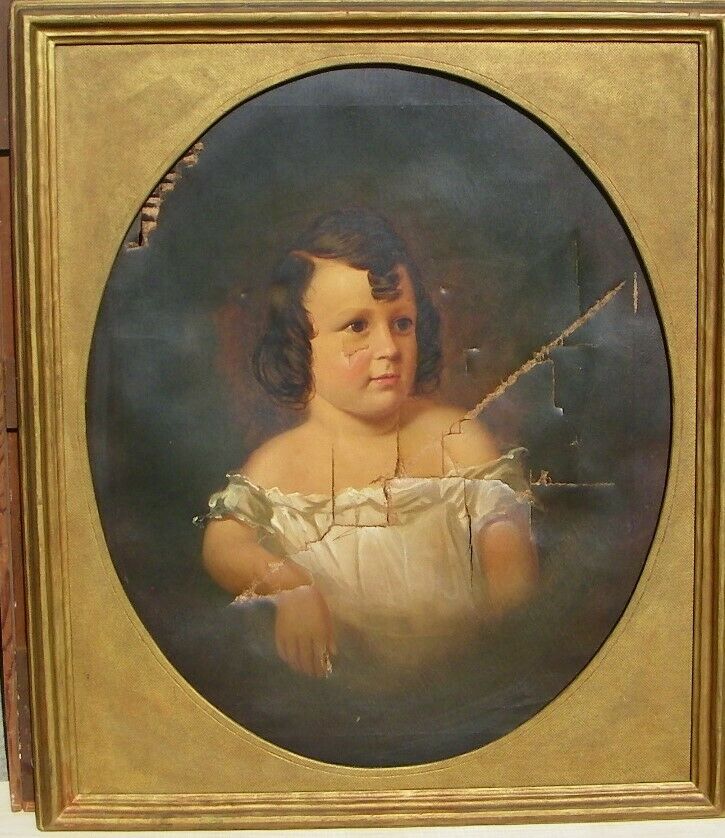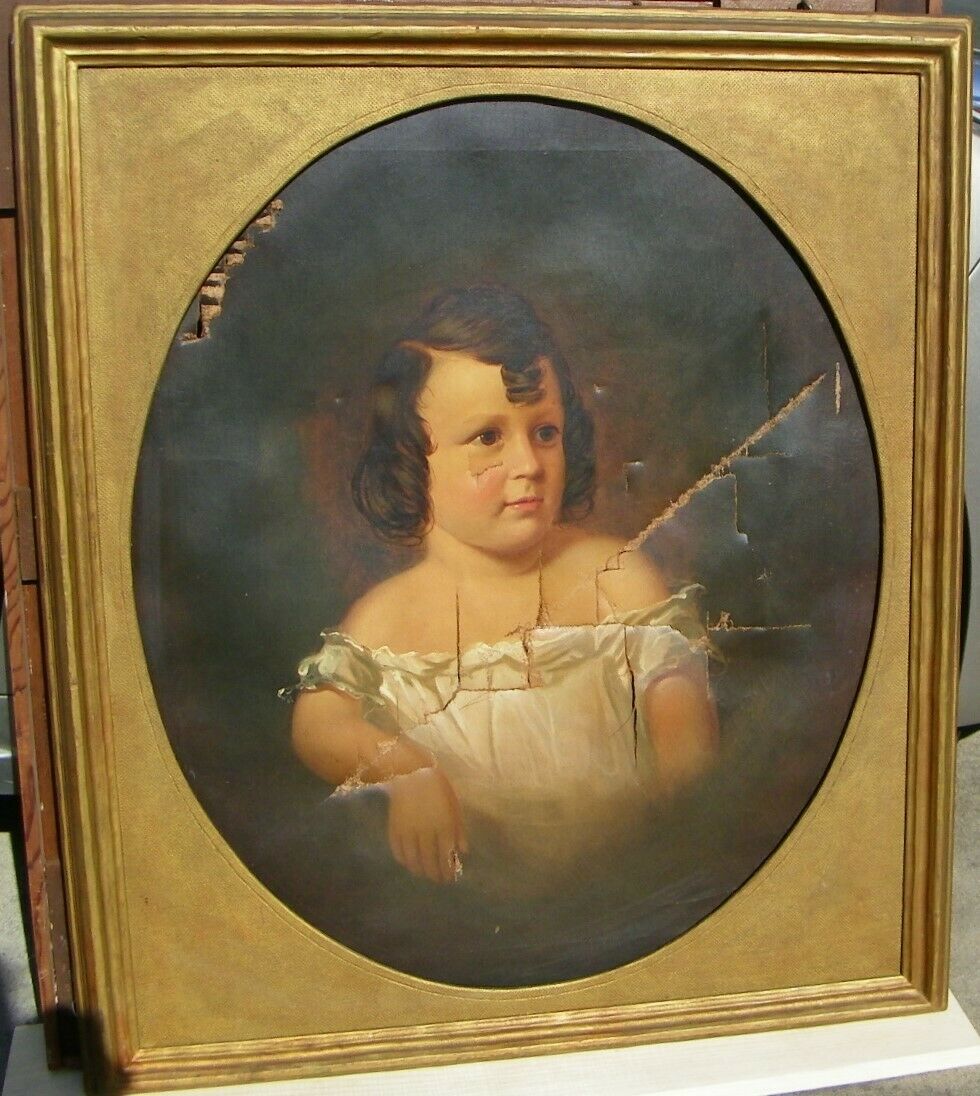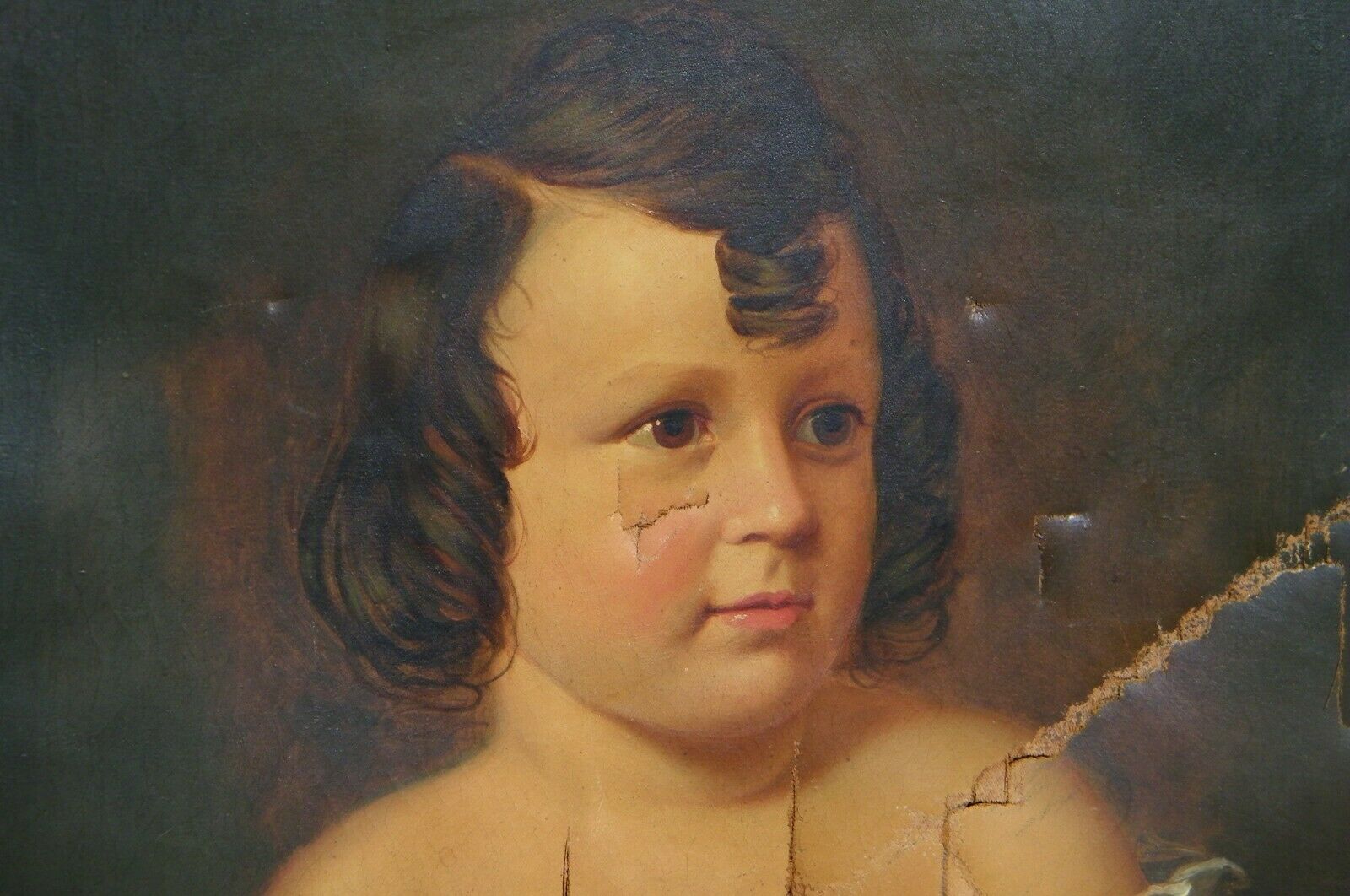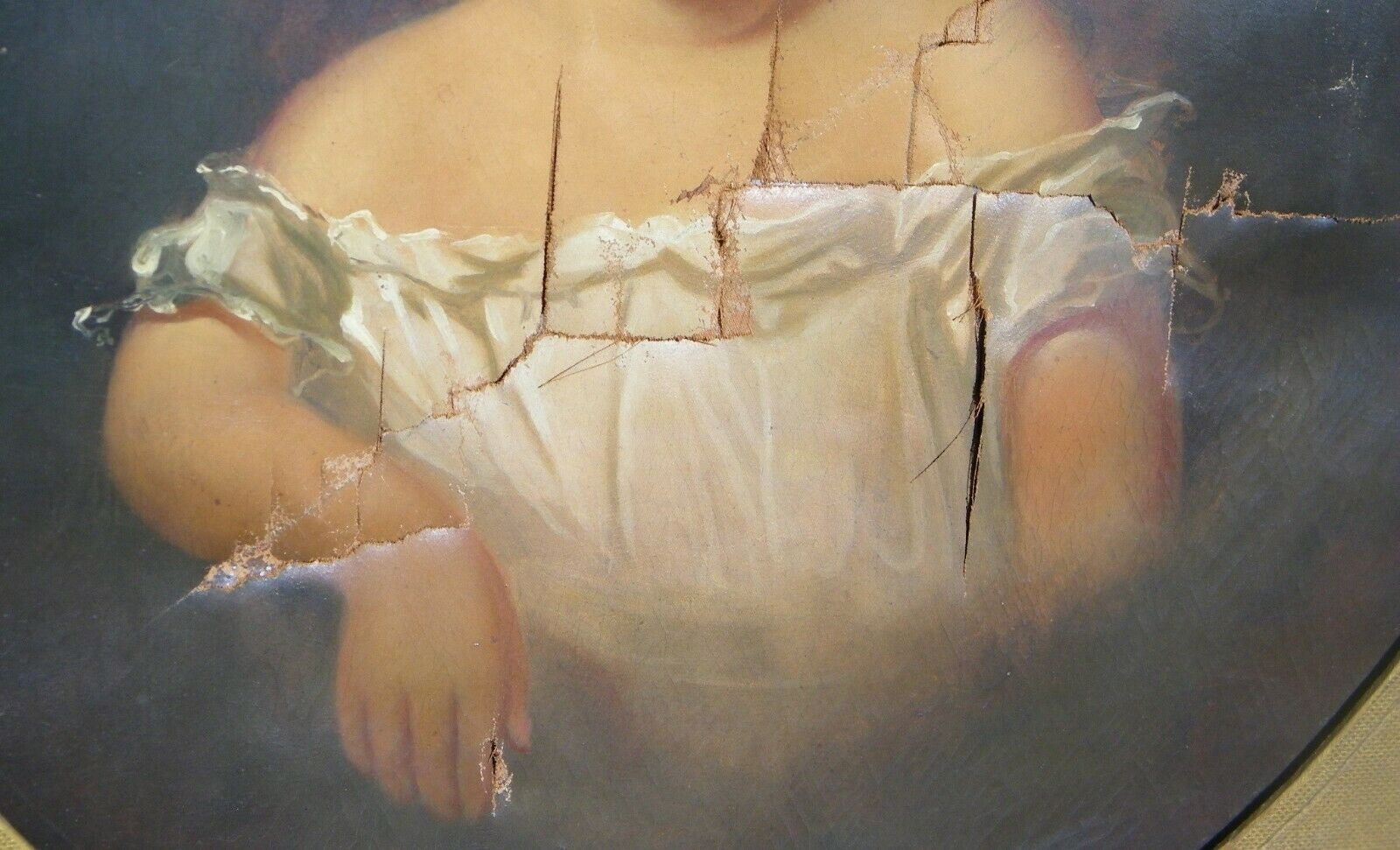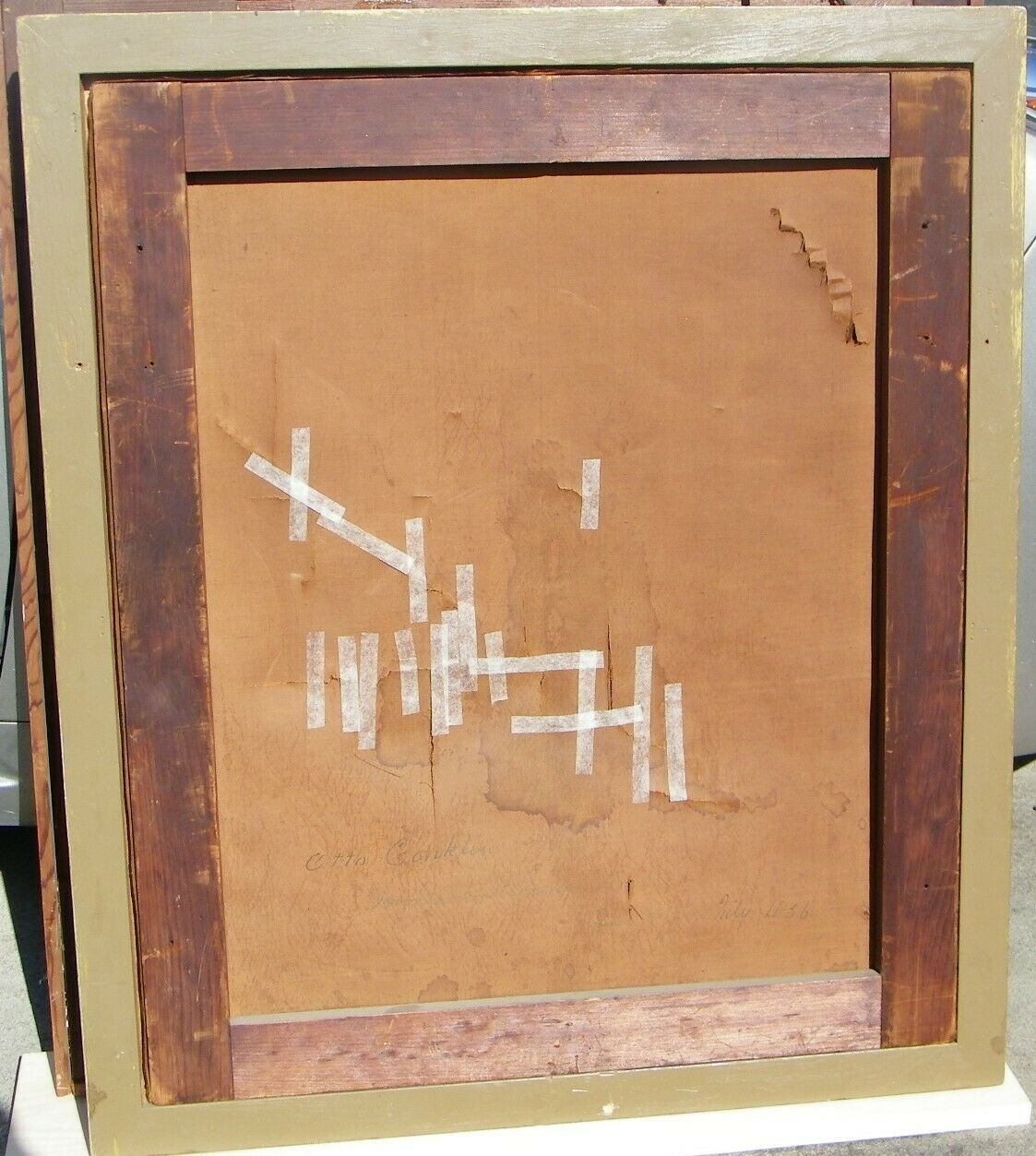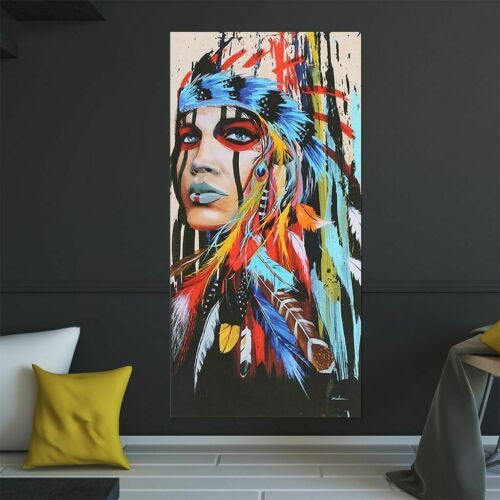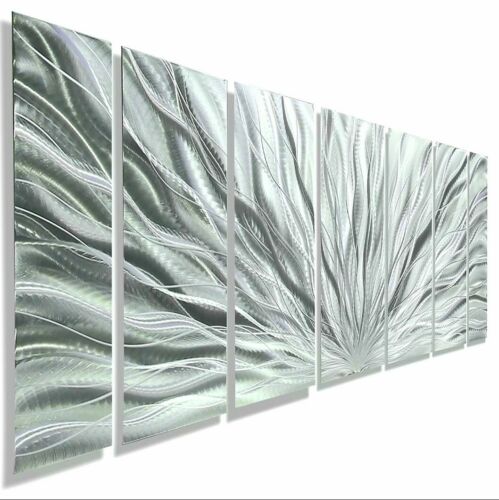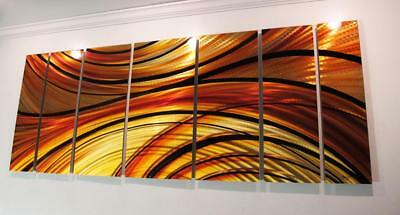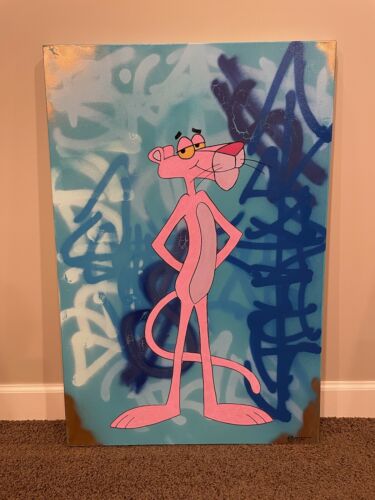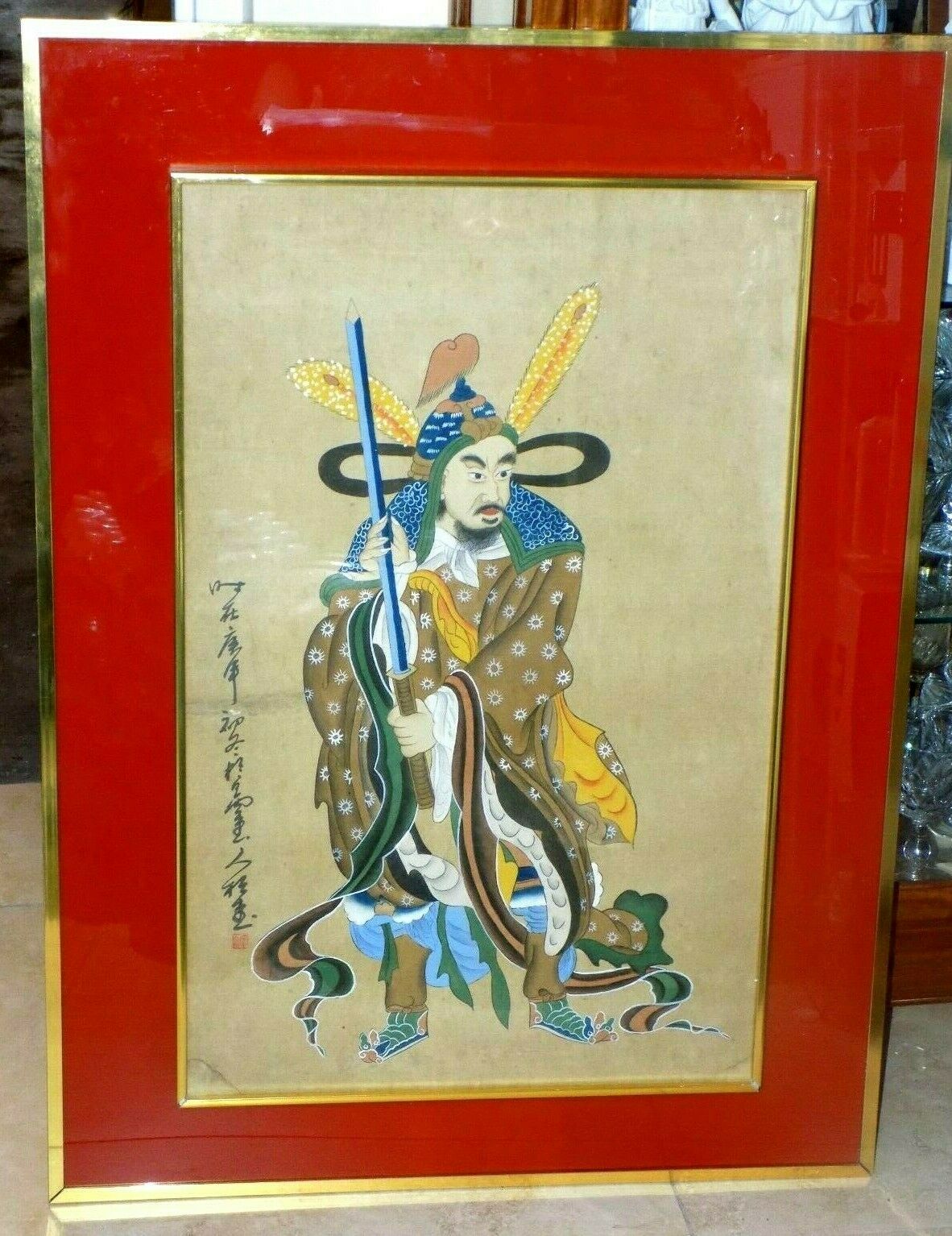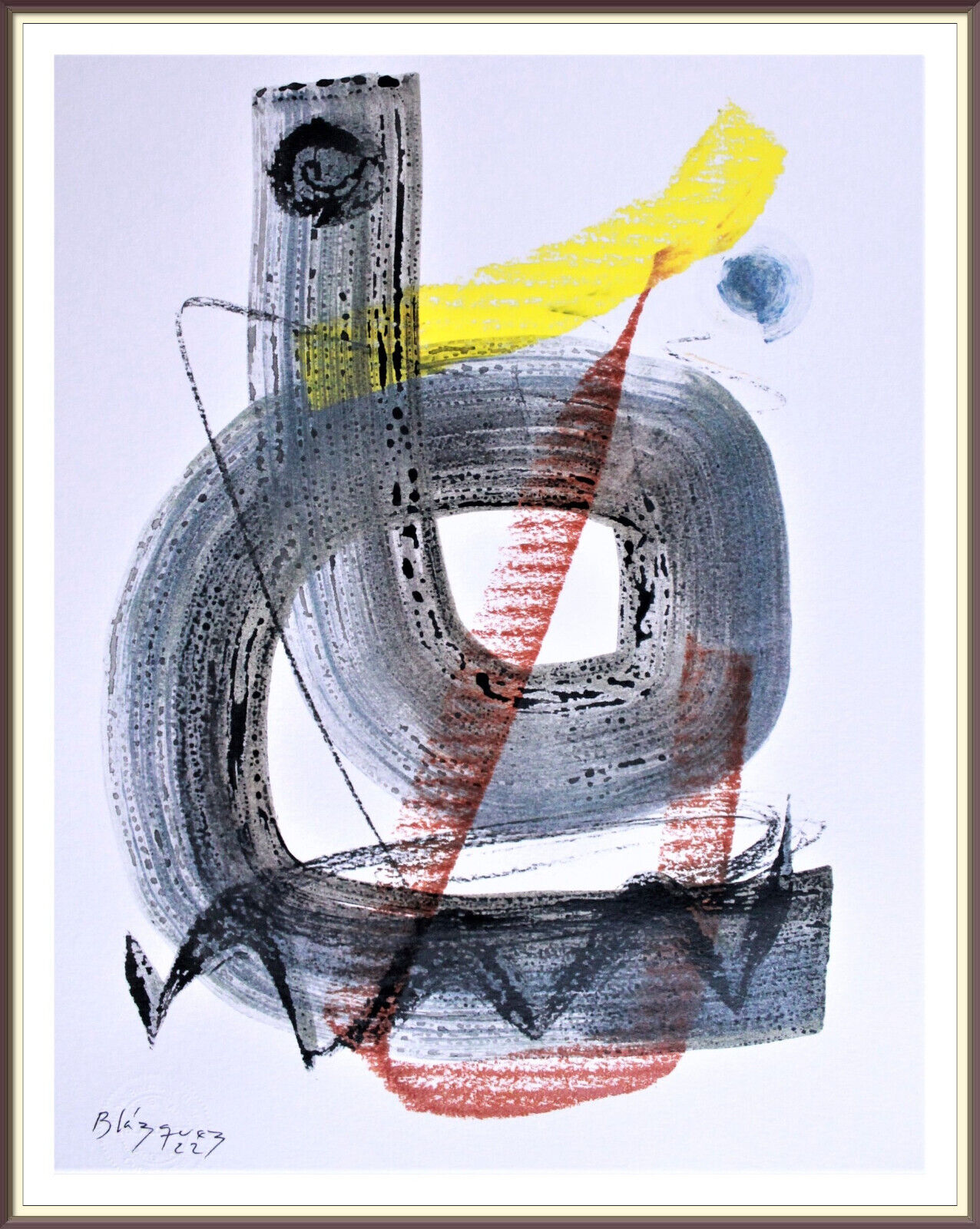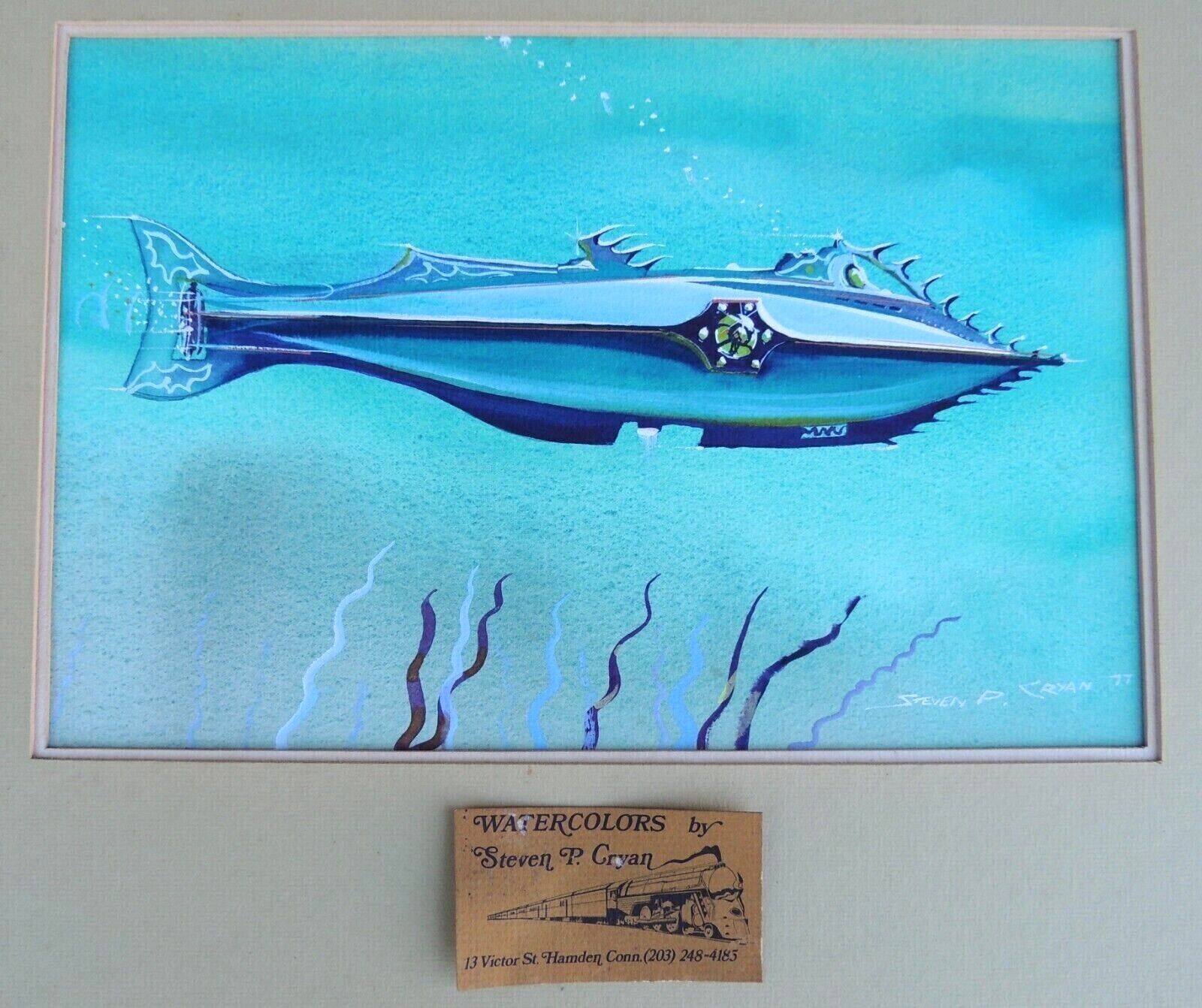-40%
Otto Conklin Green Bay 1856 by S.M. Brookes & T.H. Stevenson
$ 3696
- Description
- Size Guide
Description
Otto Conklin Green Bay WI July 1856By
Brookes & Stevenson
S
amuel Marsden Brookes (March 8, 1816 – January 21, 1892) and
Thomas Hodsell Stevenson (May 19, 1817 - March 19, 1882)
painted this portrait of Otto Conklin in July 1856 while in Green Bay Wisconsin painting portraits of people important to the state of Wisconsin.
The Wisconsin History Museum has 31 portraits painted by Brookes and Stevenson during their partnership (1855-58).
The reverse:
Otto Conklin
Brookes & Stevenson Pixit
(should be pixunt)
Green Bay July 1856
I am looking for someone who thinks that this painting is a part of Green Bay Wisconsin history worth saving, and has the means to do so. There are art conservators who can fix this.
Just see their examples of fixed portraits beforehand.
Question:
What happened to Otto Conklin?
I cannot find anything about him.
How did he end of getting his portrait painted while Brookes and Stevenson were supposed to be painting important people?
He could be the son of Edgar Conklin, one of the directors of the Fox River Company that finished improving the waterway between Lake Winnebago and Green Bay.
Of the 7 directors at least 3 had their portraits painted and are included in the Wisconsin Historical Society’s collection.
Background:
In the first part of the 19
th
century the general interest of pushing pioneers further west called for the necessity of improving navigation of the Fox and Wisconsin rivers in order to open up the territory to the west and south in Wisconsin.
From an early meeting in 1829 in Green Bay to finally in 1848 when the project of improving the Fox River from Green Bay down to Fort Winnebago was approved transportation conditions remained the same.
Upon approval a Board of Public Works was appointed.
They were significantly underfunded, and failed in their task as a result.
Finally, in July 1853 the Fox River Improvement Company, directed by Morgan L. Martin, N.H. Peck, Edgar Conklin, Otto Tank, Joseph G. Lawton, B.F. Moore, and C.F. Darling took over the project.
On October 1, 1855 the first boat passed from Lake Winnebago to Green Bay.
On June 19, 1856 the steamer “Aquila” started in Pittsburg, and came by way of the Ohio, Mississippi, Wisconsin and Fox Rivers to Green Bay.
Samuel Marsden Brookes
Noted for his portraits, landscapes, and especially still life paintings of fish, Samuel Marsden Brookes was born in Newington Green, Middlesex, England in 1816.
His was a distinguished family, one that traced its ancestry back to Sir Fredrik Broke, a Dutch immigrant who was knighted by William of Orange in 1691, and his English wife, Lady Jane Marman, a lady-in-waiting at Court. Brookes’ father was a distinguished botanist who specialized in the study of fruits and operated a London nursery where he dealt in exotic imported plants. If Brookes’ family had remained in England, it is likely that Samuel would have pursued formal training in art after his graduation from private school, as he had always loved to draw and sketch.
However, his father decided to emigrate to the United States in 1833, chartering a packet boat for his family and servants, plus various pets, as well as root stocks with which he planned to establish himself as a nurseryman in his new homeland. After landing in New York, the family continued on to Illinois, where they settled in a log cabin near what was the newly founded town of Chicago.
Due to his father’s decision to emigrate, young Samuel found himself at seventeen far from any center for the study of art. Although his father disapproved, he continued his aspirations to become an artist. His first training consisted of observing itinerant artists who traveled the frontier in those days painting portraits. Samuel watched as they mixed colors and filled in pre-painted portraits with the faces of their rustic clients. One of the first paintings he created himself was in 1840, a miniature self-portrait on cardboard pasted to wood. In 1841, he paid a Chicago artist for some painting instruction, the only formal training he was ever to have.
At the same time he was taking lessons, Brookes was also giving art lessons himself, as well as painting miniature portraits for clients of his own. He moved to Milwaukee in 1842, where he met and married. He and his wife moved about as Samuel pursued his career as a frontier portrait painter. By 1845 he had saved enough money to return to Europe so as to study the works of the old masters. Brookes spent a year copying masterpieces in the galleries of London, and this was to be the foundation for the rest of his career. His intent had been to remain abroad for three years, spending time in England as well as Italy, but his wife and children, who had stayed behind in Chicago missed him terribly, and so in 1846 he returned to Illinois.
The work he had done in London copying pictures increased his sensibilities, and his painting commissions grew. At the same time, he was involved with farming as well as the rental of properties, and he became the prosperous head of a large family.
Brookes was well known in Wisconsin for his portraits of influential people, including famous Indian chiefs, as well as historical works and genre pieces.
His first still life painting was done in 1858, with subject matter that included a basket, a wine bottle, a duck, and a snipe. He went on to create later compositions with exotic fruits. In Milwaukee, Brookes helped form an art union for the sale of artists’ paintings.
By the late 1850s, his sister-in-law and her husband had moved to California, where they had settled in San Francisco, as had one of Samuels former students from Milwaukee. Brookes decided to travel to California and liked what he discovered in San Francisco. His wife was then obliged to arrange for the sale of their Milwaukee properties, and single handedly bring their six children west to join him.
The family settled into a home in the Mission District of the city, and Samuel Brookes established a studio on Clay Street, where he once again began working as a painter of portraits. Soon he became a well-known figure in San Francisco. As he had done in Milwaukee, he became involved in efforts to establish an art union, and in 1865 helped to found the California Art Union, a forerunner of the San Francisco Art Association, of which he later became vice president. He also was an active member of the Bohemian Club.
During the 1870s, Brookes shared his studio with Edward Deakin, who painted four oils of Samuel that evoked life at the cluttered studio. He was also friends with the artists William Keith and Norton Bush. Brookes became renowned for his skill in painting fish, both living and dead, with exquisite accuracy, especially the silvery sheen of their scales. His still lifes, whether fruit or fish, were often cascading arrangements.
He is also noted for his painting of a peacock, which was commissioned by Mrs. Mark Hopkins for her residence on Nob Hill. He completed Peacock in 1880, when he was sixty-four, and some regard it as his masterpiece. The Hopkins mansion later become the Hopkins Institute of Art, and the building contained numerous canvases by Brookes, many of which were lost when the Institute burned in 1906.
Samuel Brookes continued to paint in his Clay Street studio until the time of his death in 1892, at seventy-six.
Samuel Marsden Brookes was born on March 8, 1816 in Newington Green, Middlesex, England. After immigrating with his family to the U.S. in 1833, Brookes settled near Chicago which was then only a small frontier town. There he received his first and only art instruction from two migrant artists in 1841. The years 1845 and 1846 were spent in England copying pictures at the Nat'l Gallery and Hampton Court Palace. He then worked in Chicago and Milwaukee where he was active with the American Art Union. He moved to San Francisco in 1862 and spent the last 30 years of his life there. Brookes was a founder of both the Bohemian Club and the San Francisco Art Ass'n, and served as first vice-president of the latter. While maintaining a home in the Mission District at 34 Prospect Street, he gave art lessons at his studio at 611 Clay Street which he shared with his close friend Edwin Deakin. Brookes enjoyed great financial success during his lifetime with his paintings commanding as much as ,000 each from such patrons as E. B. Crocker and Mrs. Mark Hopkins. His early work in the Midwest was mostly portraits; however, in California he gained national renown for his still lifes of fish, flowers, fruit, and birds. Considered to be the finest American still life specialist of the 19th century, his paintings are infinitely detailed and meticulously realistic. Brookes died in San Francisco on Jan. 21, 1892. Exh: Mechanics' Inst. (SF), 1869, 1871 (gold medal); Centennial Expo (Philadelphia), 1876; Calif. State Fair, 1879-90; Calif. Midwinter Int'l Expo, 1894. Works Held: De Young Museum; CHS; Brooklyn Museum; Wisconsin Historical Society; Crocker Museum (Sacramento); Oakland Museum; Nevada Museum (Reno).
Edan Hughes,
"Artists in California, 1786-1940"
Thomas Hodsell Stevenson
A landscape and miniature painter and art teacher, Thomas Hodsell Stevenson was born on May 19, 1817, probably in Rochester, England, and came to America with his family around 1830. They settled outside of Cleveland, Ohio, which is now Richmond Heights.
Following is a reprint of an earlier newspaper reference by Norris Schneider, from the
Ohio Republican,
October 21, 1843. The reprint was in the
Times Recorder
newspaper in Zanesville, Ohio and is dated 1-22-67.
"T.H. Stevenson "painted miniatures on ivory and made pencil sketches."
He is the same Thomas Stevenson who did a series of paintings of the Fox and Wisconsin Rivers that are in the Wisconsin Historical Society. In 1855, a Thomas Stevenson was in Milwaukee, and for the next three years worked in partnership with Samuel M Brookes to do the views of the rivers and also three views of Indian battlegrounds.
Stevenson died on March 19, 1882 in Indianapolis, Indiana
Little is known about Thomas H. Stevenson, beyond the fact that he was an immigrant from England who worked mostly in Ohio and Wisconsin. Artistically, he was a painter of landscapes, portraits, and miniatures in addition to being an art teacher. He was active between 1841 and 1874.
In 1841, in Cleveland, Ohio, Stevenson owned a studio where he practiced miniature painting and teaching.
In 1855, he began a partnership with Samuel Marsden Brookes. Together they painted portraits of influential Wisconsin citizens, including one of a judge named James H. Lockwood in 1856. The Wisconsin Historical Society also commissioned Stevenson and Brookes to paint three battle scenes of the Black Hawk War, and the Fox-Wisconsin River Improvement Company also commissioned them to paint ten river landscapes of Milwaukee for advertising. These paintings and the battle scenes were done in panoramic format. Together in their studio they held joint exhibitions and held lotteries for profit and to dispose of their paintings. Lotteries were not uncommon ways for artists to raise interest in their work in the mid-19th Century.
In 1858, Stevenson’s partnership with Brookes dissolved. Although their partnership was brief, it is notable for their detailed renderings of Wisconsin in its infancy as a state. His collaborations with Brookes are still well-renowned for their contribution to the visual history of Wisconsin. Artwork by Stevenson can be found in the collections of Milwaukee's city hall (an 1873 portrait of Solomon Juneau, first Mayor of Milwaukee) and Museum of Wisconsin Art, West Bend (Little Elkhart Lake, Sheboygan county, dated 1874).
